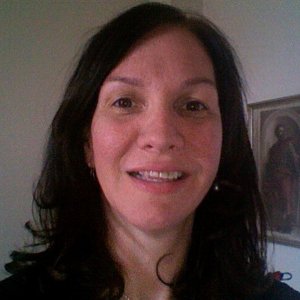There’s a lot of books out there on crafting and artisan-level work. They’re usually how-to’s that combine techniques, project ideas, and patterns. Some are wonderful but too often the projects either don’t stand the test of time, or are a real stretch in terms of the use-value of the end product.
Betz White’s Sewing Green: 25 Projects with Repurposed & Organic Materials is a real exception. Beautifully designed, easy to read, and full of great project ideas, the book is a worthy addition to any crafter’s library.
Green is as green does
But more than the above, White makes a case for “green” — for truly upcycling existing materials into new products or uses — with conviction. She loads her book with ample examples of what is authentically green, offering real insight into why this is critical to life today, and provides great examples of people (mostly women) who are doing this with style and success.
This book is not about guilt and sacrifice; it’s about creating style with a conscience, and merging our love of craft with our love of the planet. When it comes to sewing, I have found that I am most satisfied with my projects when I use materials that I know won’t have a negative impact on the planet — or better yet, may have a positive impact! Two ways I do this are by using repurposed fabrics or fabrics made from organic or sustainable materials.
While repurposing is hip right now, White says it has deep roots in our country’s history, when frugality and creativity merged to form such essentially American items as patchwork quilts and penny rugs. She goes on to give examples from Hollywood movies that show repurposing as a big part of our cultural mindset.
How to upcycle

Sewing Green: 25 Projects Made with Repurposed & Organic Materials by Betz White, STC Craft/A Melanie Falick Book (2009), 144pp, softcover, $16.96.
Offering tips about how to look at one object as the potential raw materials for something else altogether — and where to find such resources — White also talks about how to create a work space that draws on the same sense of upcycling, mixed with a similarly new earthy style, to create a harmonious vibe in which to get inspired and work.
But my favorite thing of all may be the inspiration found in the women doing this work already. I’ve written before about Alabama Chanin, whom White covers in her book. But she also profiles other artist-businesswomen like Crispina ffrench, and activists like Wendy Tremayne (among others).
Finally Sewing Greenoffers suggestions about how to work with others to create the kind of artisan collectives and happenings that make it easier for everyone to get their work done, stay inspired, be connected, and lower expenses. And, I love the quotes she adds from luminaries like Mahatma Gandhi, who reminds us that,
There is no beauty in the finest cloth if it makes hunger and unhappiness.
Coupling a great sense of design with truly worthy and meaningful information this is a craft book that stands above many others in its more holistic look at the merging of content and form.
–Lindsay Curren, Lindsay’s List






